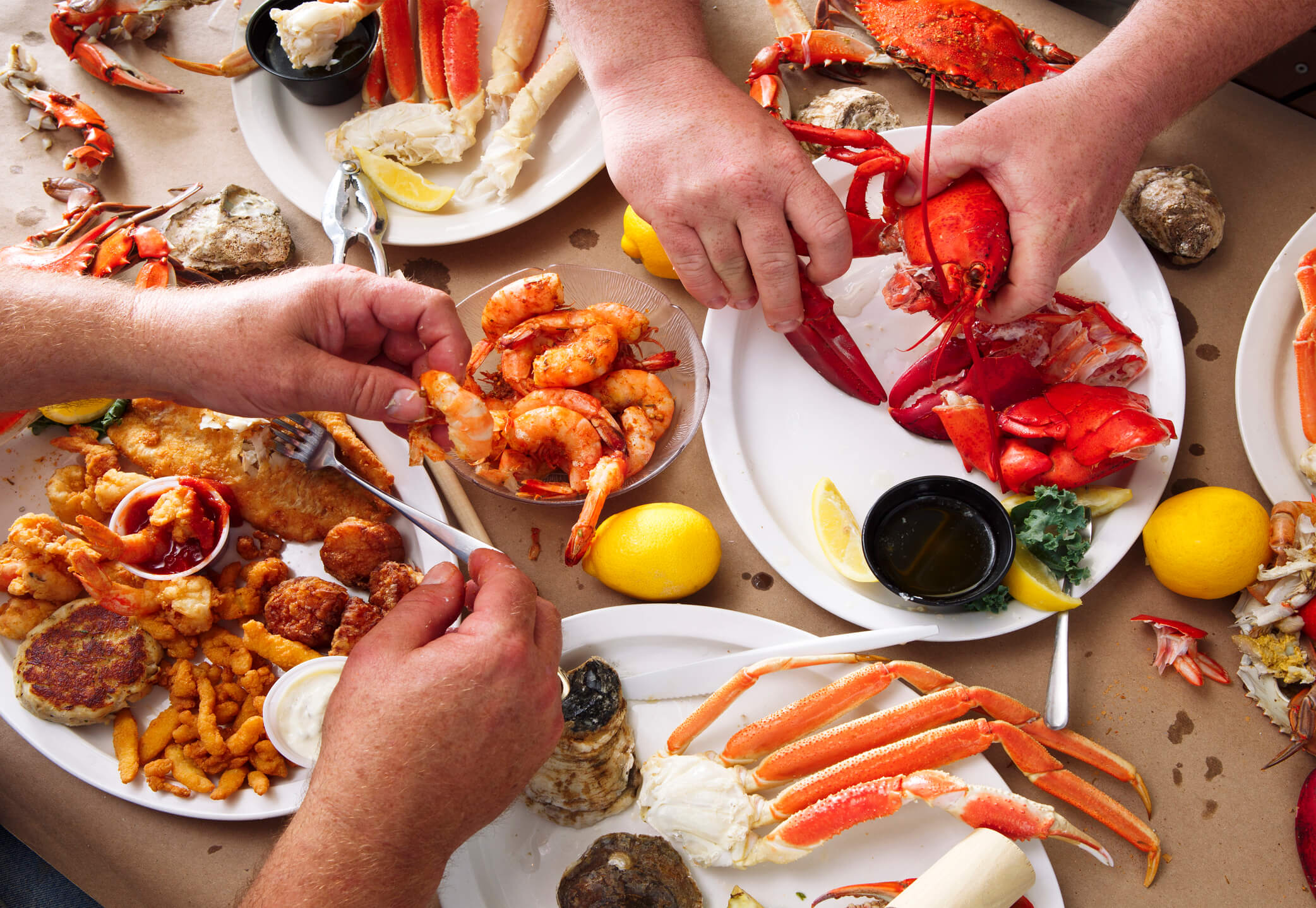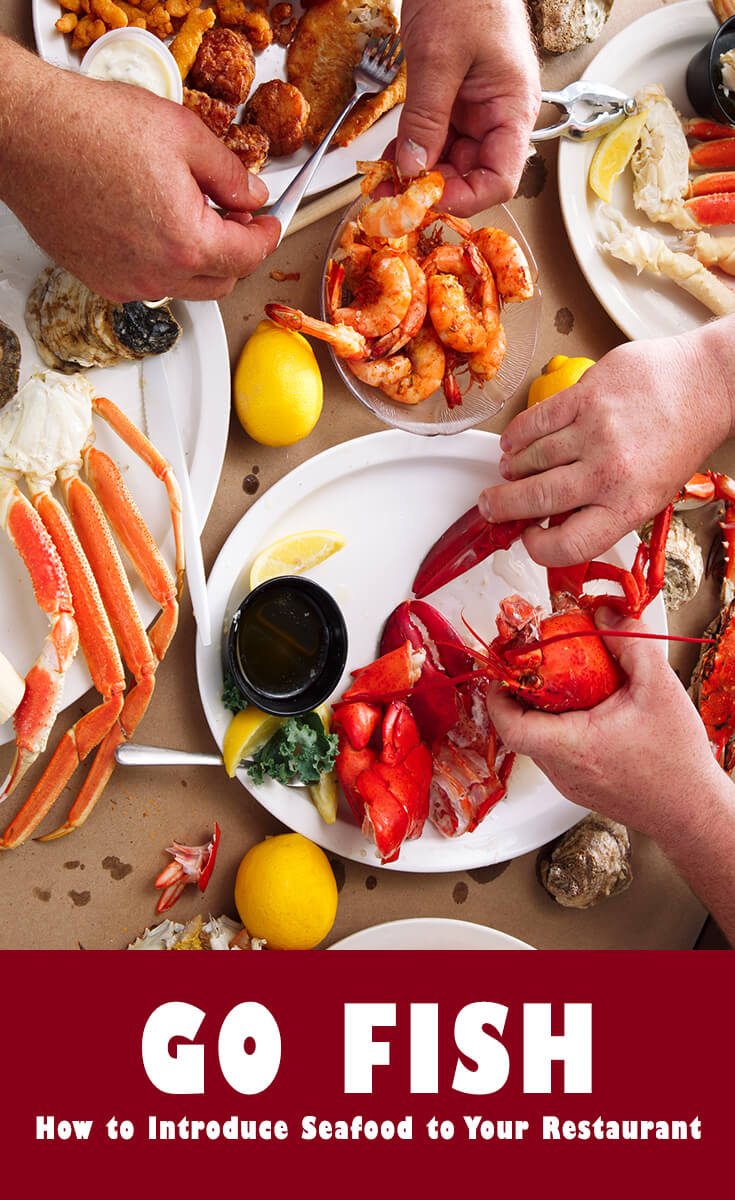There are a lot of good reasons why you should have at least one seafood option on your menu. But the most logical reason is probably this — there are a lot of people out there who are concerned about their health.
Seafood is high in protein and Omega-3 fatty acids. And it’s low in fat and cholesterol. Including a seafood option on your menu will encourage visitors who may not be interested in a heavy beef or pork dish. It’s a flavorful and filling alternative to chicken — the most consumed protein in America.
If you’re interested in adding some seafood to your menu, here are some tips on how to go about it.
Safety first
Seafood has some special considerations that must be taken into account when adding it to your kitchen.
Freshness
Order your fish as fresh as possible. If you’re bringing in a special variety for a Saturday special, don’t order it for Monday delivery. Fish should be frozen or packed tightly on ice when it’s delivered to your restaurant. Make sure to store non-frozen seafood in your walk-in or refrigerator below 41°F.
Tools
If you’re adding a shellfish that requires shucking like oysters or clams, make sure you have the proper equipment. You’ll need a clam knife or oyster knife, to start. Get the right tool for your particular mollusk. Using the wrong tool can result in injuries.
You’ll also want a metal shucking glove. These are basically a glove of chain mail, meant to protect your cook’s hand if they slip with the knife. They are a bit cumbersome, but driving a chef to the emergency room during the dinner rush will be much more inconvenient!
You may also want a fish scaler. This tool looks like a serrated spatula, and you can use it to descale a fish. It’s probably only necessary if you plan on cooking and serving whole fish with the skin on.
Allergies
Over 2% of American adults have some kind of seafood allergy. In fact, fish and shellfish are two of the “big 8” of the allergy world, along with milk, eggs, tree nuts, peanuts, wheat, and soy.
So it’s vital that your kitchen prevent cross-contamination. That means using separate knives, cutting boards, pots, and pans for all fish and shellfish dishes. And make sure kitchen staff knows to change their gloves after handling seafood.
Before bringing seafood into your kitchen, make sure to check with your local health department for any storage or handling regulations.
Fresh vs. frozen
Contrary to what some people think, it’s possible to get excellent quality frozen seafood. In fact, if you live inland, frozen seafood will probably be a better choice for your restaurant.
Consider the logistics of the fishing trade. The boat is out on the water for several days, pulling in fish from the line. The fish has to stay on the vessel until it comes back into port. So a fish could be three days old before it even reaches land. And then the fish has to be put on a truck or airplane, before finally making its way to your walk-in.
If you live on the coast, you’ll have that fish in a day or two. But if you’re in Lincoln, Nebraska, that fish could be almost a week old by the time it gets to you.
But some fishing vessels flash freeze the fish they catch straight off the line. The freezing process will arrest the aging of the fish after it’s been caught. If it’s handled well, frozen properly, and thawed slowly in a refrigerator, the flavor and texture of that frozen fish might just outshine the “fresh” version.
Take advantage of seafood’s versatility
Seafood is far more versatile than many of us imagine. No matter what kind of cuisine you serve, there is room for some kind of seafood dish on the menu.
A brunch-focused restaurant could add cured Nova lox to the menu, served in an omelet or with a bagel and cream cheese. If you serve New American or gastropub fare, cured fish and seafood pâté on a charcuterie board will do very well!
Seafood is very popular in much Central and South American cuisine. Traditional dishes like ceviche, tapado (Guatemalan seafood stew), and whole grilled fish will impress diners. And seafood curries, like Thai choo chee fish or South Indian Rasam soup bring a little spice to the sea.
People love to experiment with new flavors. So try to present a seafood dish in a new and unusual way.
If you’re concerned about sales volume, there’s no need to go over the top adding several kinds of seafood at once. A single dish will do until you establish how it’s received. Or see if you can add two different dishes based on one kind of seafood. A shrimp cocktail appetizer and a shrimp stew entree will let you buy once and cook twice.
Promote health
There are few things tastier than a delicious fish fry. Beer battered and golden brown, served with a side of fries and tartar sauce? Yes please.
But don’t limit seafood options to the deep-fried variety. Since seafood has so many health benefits, include some lighter options.
Including fish or shrimp as an add-on to the salad menu lets guests create a filling meal (plus it’s a great upcharge.) And grilled fish is a delicious treat that most people don’t tackle at home. If you grill and serve it whole, you’ll have a unique plate to present to your guests.
Consider sustainability
The environment is a hot button issue right now. But whatever your opinion on climate change, one thing is for sure — overfishing is a big problem.
Fish species like bluefin tuna, Atlantic cod, and Chilean sea bass have been overfished almost to the point of extinction. And even abundant species like some salmon and albacore can be unsustainable when fished with destructive methods.
Bottom trawls and dredges scrape the ocean floor to catch bottom-dwellers like shrimp and lobster, but they damage the seafloor habitat in the process. Large walls of gillnets catch plenty of salmon and perch, but they can also entangle vulnerable sea turtles and sharks.
Even farmed fish aren’t problem-free. Net pens concentrate pollution from the fish raised in them, which then damages the local ecosystem. And this can contribute to widespread disease through the fish colonies.
But none of this means that you shouldn’t add seafood to your menu.
Sustainable fishing methods like trolling lines, handlines, and pole-and-lines all minimize the accidental capture of vulnerable species. Plus they don’t damage the seafloor.
Farming methods like recirculating tanks or flow through raceways allow for fresh, clean water to reach the fish. They also allow for wastewater treatment before contaminants affect surrounding areas.
Even sushi restaurants can fill their menus with sustainable and responsible fish. Austin, Texas restaurant Lucky Robot has managed to create a sushi menu with no bluefin tuna, no eel, and no hamachi — three items that are ubiquitous on sushi menus.
Instead of bluefin, they serve Hawaiian line-caught bigeye tuna. Eel has been replaced with a clever unagi-style BBQ catfish. And instead of hamachi, they serve Hawaiian amberjack. They’ve found that people will try new things if given the opportunity. And they’ll appreciate your conscientiousness as well.
To learn about the least at-risk seafood and the best fishing and farming methods, go to https://www.seafoodwatch.org/. This website by the Monterey Bay Aquarium is a goldmine of education.
Educate your staff
The menu is set, the ordering is done, and you’re ready to go! Now it’s time to talk to the front lines.
Make sure your FOH staff is well-versed in your seafood dishes. Give them some good comparisons that they can use for guests who might not be familiar with the new menu options.
For example, Arctic char is a fish that many people may not have heard of. Give your servers a couple talking points that guests can relate to. “It’s moderately firm, not flakey like cod. It tastes a bit like a cross between a trout and salmon. And it has a peachy pink color.” Now the guest has an idea of flavor, color, and texture.
Make sure staff also knows where the fish came from. Is it farmed or wild? Fresh or frozen? People may want to know. If it’s farmed, they should know the name of the farm, as some are more reputable than others.
Conclusion
Seafood will be a welcome addition to the menu for many of your guests. Whether they’re looking for a lighter option or just something different, seafood can be the answer. Have fun with it, and get creative!







